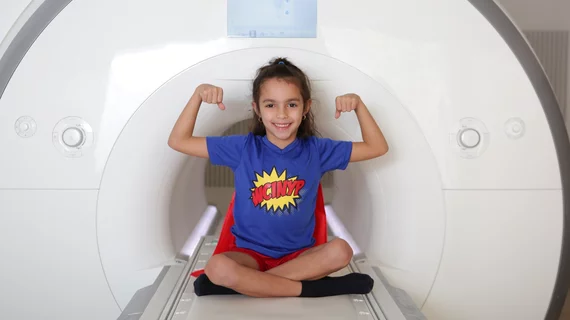As pediatric providers attempt to limit the use of anesthesia when imaging pediatric patients, Boston imaging experts are providing a few clues.
Researchers with Massachusetts General and Boston Children’s recently conducted a retrospective investigation of some 500 MRI scans, seeking signals of how to limit use of such drugs among patients under 18. They found three potential predictors of propofol exposure, according to their analysis, published July 8 in the American Journal of Roentgenology. Those include multiple body parts being examined, IV contrast administration and 1.5T field strength.
“Pediatric MRI anesthetic exposure can be quantified and predicted based on imaging and clinical variables,” concluded Fedel Machado-Rivas, MD, with the Department of Radiology at Mass General, and colleagues. “We believe the results presented in this study can serve as a valuable baseline for future efforts to reduce pediatric MRI anesthetic medication doses and MRI scan times.”
To make their determination, the research team queried their electronic health record to pinpoint all MRI exams performed under propofol from 2016 to 2019. The analysis incorporated 500 exams across 426 pediatric patients, with imaging of the brain, brain and spine, brain and abdomen, and the brain/head/neck all incorporated in the analysis.
They determined that single body part examinations were shorter and received less propofol that multiple body part exams. And among the single-part group, a higher American Society of Anesthesiologists classification, oncologic diagnosis, magnet strength and IV contrast administration were all associated with longer scan times and higher anesthesia use.
“MRI offers a distinct advantage over CT for imaging infants and young children as it avoids ionizing radiation and offers superior contrast resolution. In children under 6 years of age, MRI often requires general anesthesia that may have long-term detrimental effects. This study helps identify considerations for minimizing MRI anesthesia use,” they wrote. “Higher field strength scanners, unenhanced technique and single body part imaging will all likely reduce patient anesthesia dose,” they advised later.
You can read more of the analysis in AJR here.

